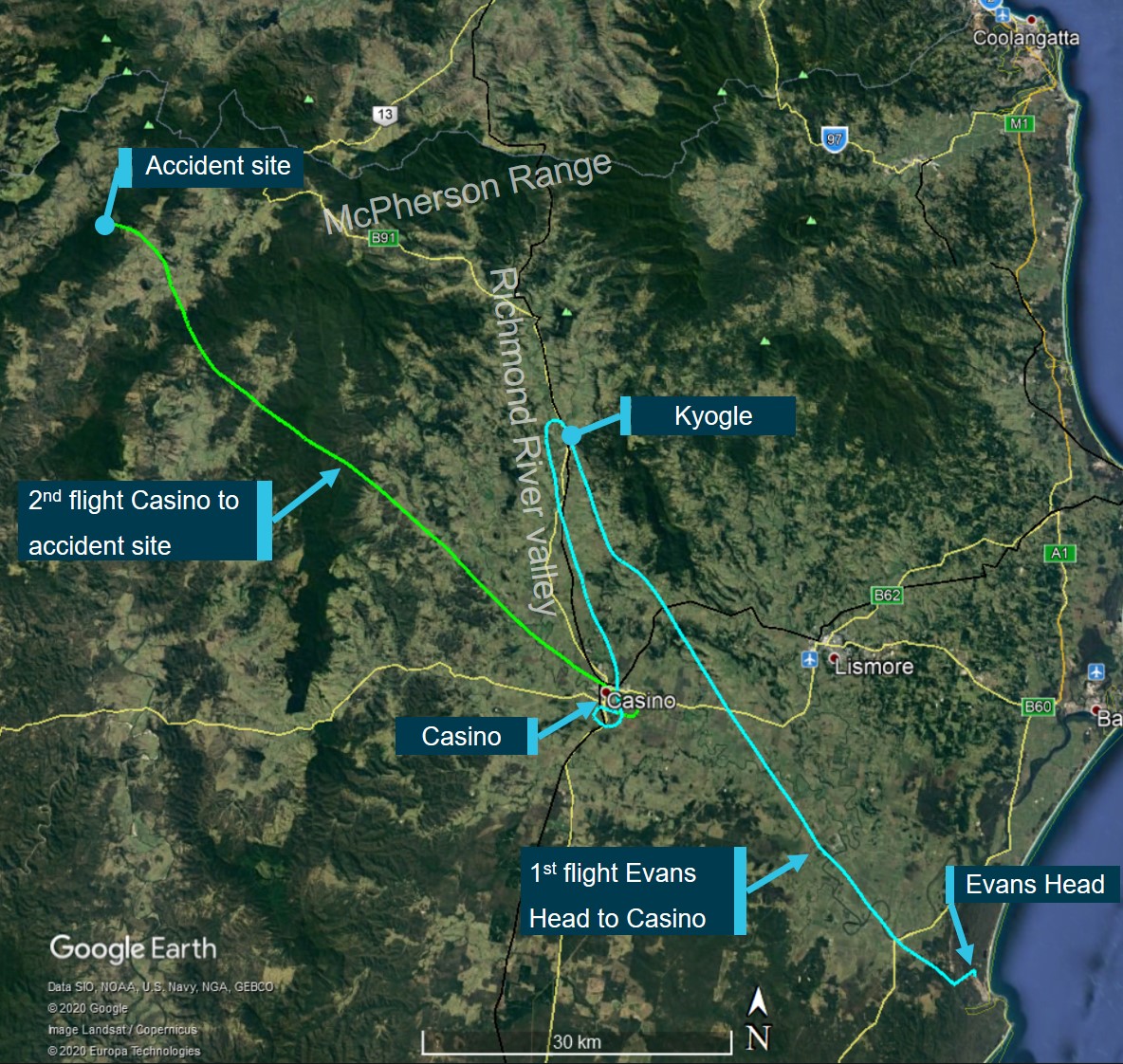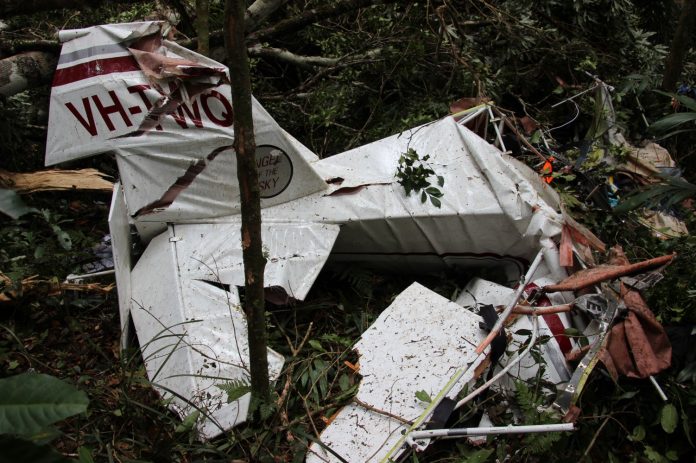Like countless others, a private pilot with decades of experience died when he flew into cloud and became spatially disorientated.
It was no good. The pilot decided to turn back. Low cloud made VFR flight unsafe and he was not instrument rated. But an hour later he took off again, this time flying a more westerly course. Twenty minutes later, the pilot and his passenger, who were brothers, were dead. No one saw their aircraft dive into the ground.
The Australian Transport Safety Bureau (ATSB) issued its report into the crash this week. It happened on 12 January 2020 to a home-built Wittman Tailwind, flown by a 68-year old pilot who had amassed 1200 hours over 38 years. He had built the high-wing, cloth-covered tail dragger over 12 years, and flown it for just over a year after it received its special certificate of airworthiness in the experimental category. The brothers were returning to Boonah, in southeast Queensland from a fly-in at Evans Head in northern NSW. After encountering low cloud ahead the aircraft diverted to Casino, where it remained for an hour before the brothers took off again.
Electronic flight bag (EFB) data showed the aircraft had made a series of rapid descents and climbs followed by a descending left turn that continued until the aircraft collided with high ground in Tooloom National Park, NSW.
Over the last 4 minutes of the flight, the aircraft’s recorded ground speed varied rapidly between 109 and 175 kt, rate of climb and descent ranged between maximum values of +2,400 ft per minute and – 2,400 ft per minute and altitude oscillated between 4000 and 3100 feet.

‘It is likely the pilot encountered conditions of reduced visual cues and became spatially disorientated which led to a loss of control and collision with terrain,’ the ATSB said.
Investigators found the pilot had 8.4 hours instrument flying experience, with 5 of these hours logged in 1982 and 1983, and the remaining 3.4 hours logged from 1986 to 2015. The pilot did not hold an instrument rating.
The ATSB was told the pilot used an EFB for navigation and flight planning but his use was limited to using the direct to function, which plotted a track from the aircraft’s current location to a desired destination. The pilot was also reported to use the EFB’s weather radar overlay function, which displayed rain but did not display clouds.
In discussing why the pilot had chosen to take off again after having turned back, the ATSB report alluded to the inherent difficulty of making correct weather-related decisions. It quoted Australian researchers Mark Wiggins and David O’Hare, who pointed out a paradox.
‘Because of the variable nature of operations in the aviation environment, weather-related decision-making is often considered a skill that cannot be prescribed during training. Rather it is expected to develop gradually through practical experience. However, in developing this type of experience, relatively inexperienced pilots may be exposed to hazardous situations with which they are ill-equipped to cope,’ they said in a 1995 study of general aviation pilots.
The ATSB issued a series of recommendations to VFR pilots, as it has done in many previous reports. These are worth remembering, of course, as is the general, and unsettling message: you are only as good as your last flight decision, and if that decision is weather related, and you are not experienced, you may make errors that you will have no way of dectecting.
Further information
Wiggins, M and O’Hare, D, 1995, ‘Expertise in Aeronautical Weather-Related Decision Making: A Cross-Sectional Analysis of General Aviation Pilots’, Journal of Experimental Psychology: Applied, Vol. 1 No. 4






Tragic, more tragic that it didn’t need to happen! -(
I am an RAAUS Certificate pilot. Many times while flying from Caboolture airfield it has been difficult to communicate actions in the circuit due to busy radio. I have found it difficult to get a message out with calls from Sunshine Coast traffic, helicopter traffic and local traffic all coming in. For inexperienced pilots this creates additional tension.
A familiar sad story. an exsperienced VFR pvt pilot ,gone,and his passenger. it doesn,t have to be like this. there is a simple solution to put an end to weather related accedents. And 90 percent of all accedents are weather related. VFR flying relies on visual reference , take that away and the pilot is history. the small amount of instrument flying in our training is usless , soon forgotten, and a waste of time and money. I could write a book on wot we should do and wot we shouldn,t , we,ve all read that book, but it doesn,t help, the accedents will continue to happen.,UNLESS the powers to be listen to wot i,m about to suggest. my solution to stop all these accedents from happening is the AUTO PILOT. they should be manditory in all light aircraft , just like the transponder . not only that ,all pilots must be endorsed on the auto pilot , and logged in their log book, if that becomes a realety weather related accedents will decline rapidly . SAFE FLYING
Sorry Rocky but an auto pilot does not have an exit strategy from IMC conditions.
People will still die, perhaps not from losing control but by becoming a CFIT statistic.
Mandatory auto pilots in light aircraft would only increase operating costs and give some pilots a false sense of security that may well have a fatal outcome.
You don’t mess with IMC conditions unless you have an instrument rating and meet the recency requirements of that rating.
IF you have been properly trained as a VFR pilot you will know that if you are unable to see a clearly defined broad horizon ahead from your minimum cruising altitude (500′ AGL) turn back immediately.
Having the discipline to abide by this simple rule is what will reduce weather related accidents.